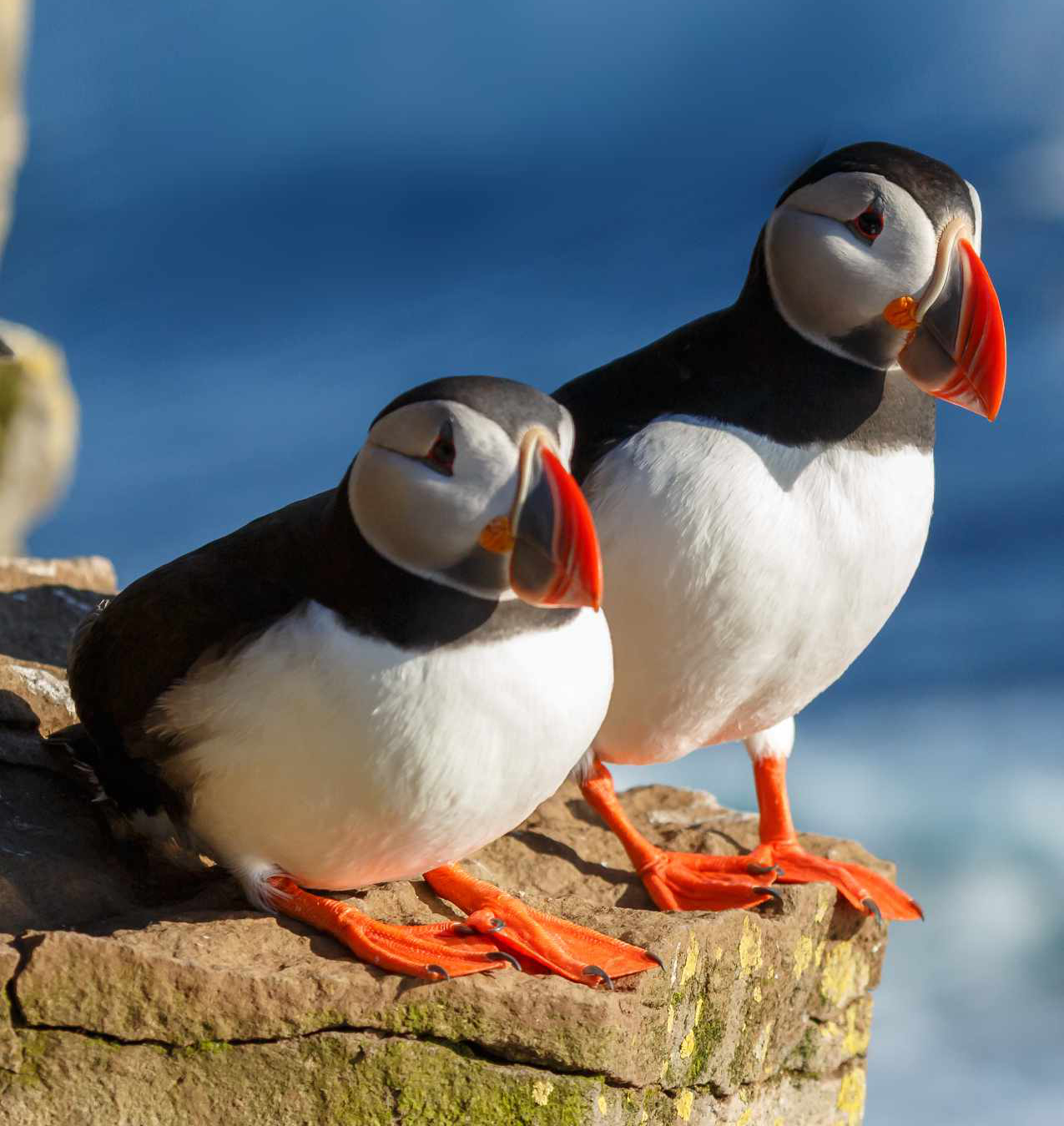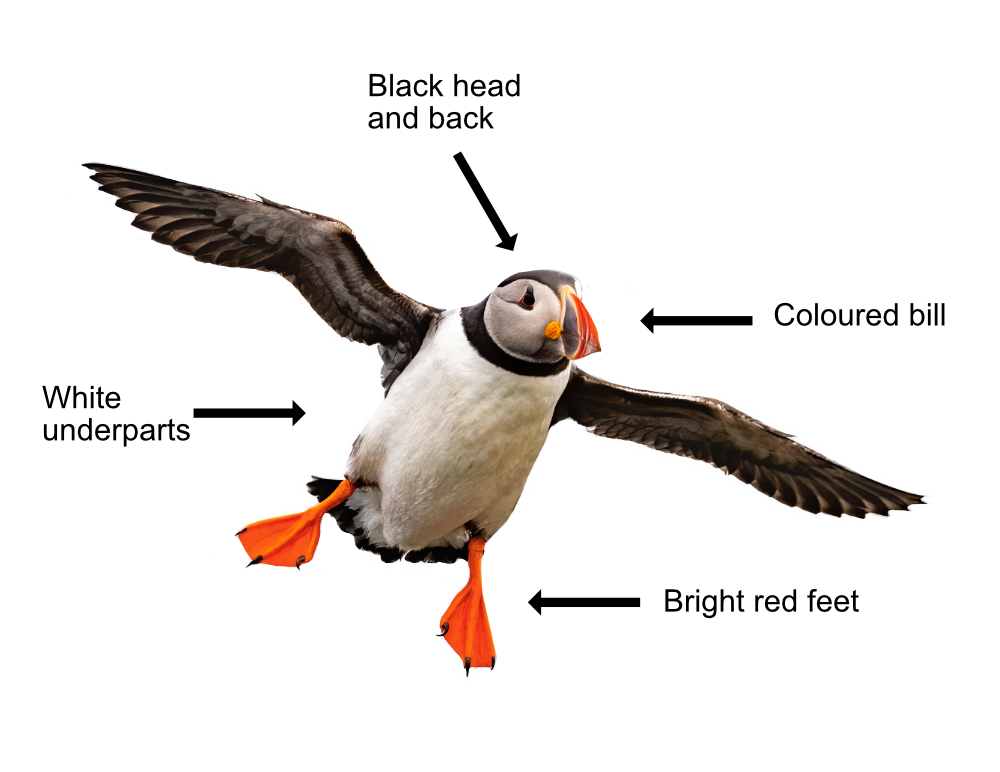
Like the Kingfisher, the Puffin is much smaller than you expect, smaller than a Woodpigeon. It always gets the full page treatment with its crowd pleasing, clown-like expression. The Puffin is a summer visitor to our sea cliffs. For the rest of the year, they live like duck pirates on the open sea.
The Puffin has a black crown and back, white underparts, an elaborately coloured bill and - bright red feet! When searching for Puffins amongst other seabirds, look for those red feet. The male is marginally bigger than the female, and youngsters are duller, without the colourful bill. Puffins fly with madly whirring broad dark wings, showing an obvious black breast band. Their call is a growling pirate's, "Arr, arr, arr" (without the "Jim lad").
Puffins feed on fish and crabs caught by diving and swimming underwater, using their wings for propulsion and legs to steer. They can catch fish at considerable depths and stay submerged for up to a minute. Favourites are any small fish like sand eels, herring and sprats.

Puffins return to their nesting areas in March, mainly on remote islands, though there are a few British clifftop colonies. They become sociable while nesting, but otherwise are loners, seen only in ones and twos. Their courtship display involves a lot of head bobbing, bill knocking, and standing upright. Unlike many other birds, they nest in burrows on cliffs, often amongst colonies of Razorbills, Gannets and Guillemots. Although they can dig their own, they usually take over rabbit burrows. The cosy nest chamber is one metre from the entrance and lined with grass. Previous pairs will reunite and use the same burrow, giving it a good clear out and redecoration. A single white egg is laid which hatches after 39 days and the chick (puffling) is fed by mum and dad for 40 days. The parents can carry ten or more fish in their bills, which are specially adapted with a series of hooks to hold the fish securely. The main danger to the chick in the nest is rats. The young Puffin leaves the nest at night, to avoid being eaten by other predators like Gulls or Skuas, and heads off for the open sea on its own. It will be 4-5 years before it returns and breeds itself. Mum and dad leave the nesting area in August and they too head out to sea to do their winter moult, during which they are flightless for several weeks.
There are 600,000 pairs nesting in Britain, mainly in the north and west. Sadly, their numbers are falling and they are Red Listed. Threats to Puffins include rats getting onto their rat free islands and overfishing, reducing food availability. Conservation efforts include the removal of the rats from their islands. The oldest ringed Puffin lived to 29 and had a hook.
Their Latin name is 'fratercula arctica' where 'fratercula' is the Latin for 'friar' from the word 'fraterculus' meaning 'little brother', because the Puffin's black and white plumage resembles the robes worn by monks. The 'arctica' refers to their northerly distribution. The English name 'Puffin' -- puffed in the sense of swollen -- comes from the fatty, salted meat of the Manx Shearwater. Puffin is an Anglo-Norman word for the cured carcasses and has no connection with cute Puffins at all. Their brightly coloured bills have given rise to various nicknames, such as the 'clown of the sea' and the 'sea parrot'. Puffins are the official bird of the Canadian province of Newfoundland and Labrador.
Our Puffin is the Atlantic Puffin. Two other Puffins, the Horned Puffin and the Tufted Puffin, live in the North Pacific Ocean.